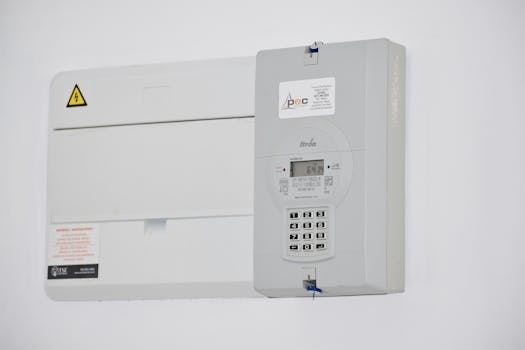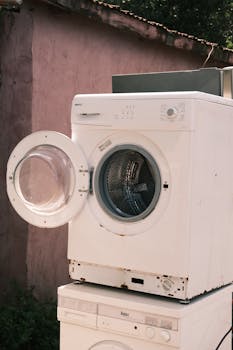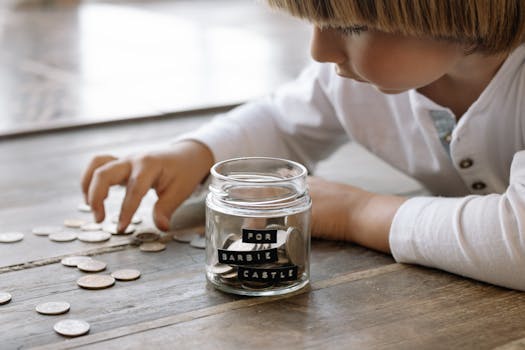Money Management
Cash-Only Budgeting: Does It Really Help You Save?
Explore the impact of cash-only budgeting on real savings and spending habits! Learn practical steps, compare methods, and see if this tangible strategy can help you control expenses and reach your goals.
Advertisement
Pulling crisp bills out for every purchase can feel unfamiliar yet oddly satisfying. For some, weaving cash-only budgeting into everyday routines sparks the curiosity: does handling bills somehow tame spending?
Spending behavior has shifted with digital wallets and apps, making it easy to swipe past our limits without thinking. That’s why many revisit the time-tested cash-only budgeting method, craving tangible control over dollars.
Ready to find out if this back-to-basics method genuinely trims expenses or if it’s another budgeting trend? Dive in for practical steps, comparisons, and scripts you can start using tonight.
Start Spending With Boundaries: Setting Up Cash-Only Controls for Daily Life
Bringing structure into your spending means giving every dollar a clear purpose. Cash-only budgeting uses bills and envelopes to cap what you spend—no hidden fees or silent app notifications.
Once you assign cash to categories—like groceries, gas, and fun—you’ll visualize trade-offs. This change instantly makes each purchase more intentional because you actually see your limit shrink.
Choosing Categories That Shape Habits
Most people use handwritten labels like “Groceries,” “Dining Out,” and “Entertainment” on envelopes tucked in their wallets—easy to grab, easy to track. Decide what matters most or leaks extra dollars monthly.
Someone might say, “My coffee run envelope is gone by Thursday!” Review categories in real life and tweak your allocations until you find a sweet spot. Keep watching for twitches: if one envelope is always empty early, adjust the next month.
When you nail your key categories, you’ll spot spending patterns quickly and wield the power to correct them immediately.
Monthly Withdrawals: Building Discipline Into Your Routine
Decide on a consistent withdrawal day. Many aim for Friday after payday, setting time aside once a month for trips to the ATM. Physically counting bills as you fill envelopes becomes a ritual.
Some people make this a family event, inviting kids to help sort and count, planting early lessons about money boundaries. Avoid the temptation to “borrow” from next month; if one envelope runs low, restrain spending or pause that activity.
Analogous to meal prep, this cash routine makes future decisions simple—no excuses, no last-minute tap-to-pay. Save receipts or notes in the envelope to monitor what lasted and what didn’t.
| Budgeting Feature | Cash-Only | Debit Cards | App-Based | Takeaway |
|---|---|---|---|---|
| Immediate Stop-Loss | Yes (run out of cash, can’t spend) | No (can overdraw) | No (easy to swipe over limit) | Cash prevents overspending |
| Spending Awareness | High (visual/can’t ignore) | Medium (see balance change) | Low (abstracted by notifications) | Cash increases awareness |
| Setup Simplicity | Basic (envelopes, cash) | Easy (card needed) | Depends on tech comfort, setup time | Cash is simplest to start |
| Emergency Flexibility | Low (limited to cash on hand) | High (can access extra funds) | High (can transfer between categories) | Cash may limit emergencies |
| Security Risk | Higher (cash can be lost/stolen) | Low (bank can replace funds) | Medium (online risk, but traceable) | Cash carries extra risk |
Benefits Every Cash-User Notices: What Changes When You Handle Every Dollar
Switching to cash builds new habits by making spending tangible each time you buy. People nearly always report stronger discipline after withdrawing their monthly limit and dividing bills across envelopes.
Expect to hear yourself say, “I only have $15 for takeout this week,” as you start seeing every category’s limit in real time. Your spending naturally slows with this physical reminder.
Stops Overspending in Its Tracks
Without the flexibility of cards, you’ll catch yourself thinking twice before any impulse buy. If there’s only $10 left for entertainment, you adjust plans instantly, delaying purchases or choosing lower-cost fun.
Cash-only budgeting helps break the cycle of swiping first, thinking later. The visible, dwindling envelope makes every expense feel immediate and hard to ignore.
- Separate cash for each category. Visual barriers prevent category creep and force “do I actually need this?” checks on every purchase.
- Set a warning signal, like a colored clip, when you’re halfway through an envelope. This keeps you alert to pace spending evenly through the month.
- Calculate daily limits for categories prone to surprises, like snacks or gas. This means if you have $40 for snacks, you won’t spend more than $1.33 per day.
- End each week with envelope reviews. See which categories need adjusting before payday to avoid running dry late in the cycle.
- Write a quick note inside each envelope when you buy something unusual—track patterns and identify random expenses that sabotage progress.
Envelopes show where you’re strong and where budgets break down, letting you fix leaks fast rather than letting habits slide month after month.
Builds Real Limits That Reshape Choices
Setting strict rules up front means you stop negotiating with yourself at the register. “My eating out envelope is empty, so I’ll cook tonight”—this kind of thinking stacks savings over the long term.
Involve your partner or kids if possible. Shared cash envelopes mean shared ownership, making team-based decisions about tradeoffs (“Let’s skip dessert so we can see a movie later”).
- Agree on envelope rules. For example, never borrow from groceries to fund movies, even if tempted—consistency locks in discipline for everyone in the household.
- Start with one or two categories if full cash budgeting feels overwhelming. Try cash for just dining out and fun money to see quick wins.
- Use cash budgeting for vacations or holidays to contain extra spending. This removes the “forgotten” expenses that creep up on statements later.
- Pin a visual goal near your cash stash. A photo of something you’re saving for is a constant nudge toward long-term restraint.
- Swap cash envelope amounts each quarter if life changes (job, move, new family member)—keep things adaptable but never unlimited.
Reinforcing boundaries helps cash-only budgeting stick, especially when you treat rules as non-negotiable and visible to everyone involved.
Spot Leaks and Plug Them Instantly: Real-World Scenarios Using Envelopes
Seeing your envelopes thin out is like watching the gas light flicker on a road trip. You change your route quickly and avoid unnecessary detours—a natural correction to stay on budget.
With cash-only budgeting, small leaks turn visible within days. When you notice certain envelopes always empty early, you can act before missing bills or overdraft fees.
End-of-Week Review: “What Did I Miss?”
Every Sunday, take out your envelopes and lay receipts side by side, sorted by category. If coffee runs or snack stops pile up, the pattern jumps right off the table.
Someone might notice, “I spent $18 on vending machines” after counting up the week. This cues a quick fix: cut snack cash or bring snacks from home next week for more balance.
Spotting genuinely necessary extras versus mindless spending happens sooner and with fewer regrets. Adjust next week’s cash to reinforce your new plan instead of falling into old traps.
Live Example Scripts: Saying No Thanks Politely
Suppose you’re out with friends and someone suggests, “Let’s grab another round.” Smile, open your entertainment envelope, and reply, “I’m all out for this week—I’m sticking to my plan.”
It’s easier to own your choices when the visual of an empty envelope backs you up. You can hold firm without feeling left out, especially if you explain your goal or bring your own drink as a backup.
Replacing embarrassment with a quick, honest reason helps friends understand—and sometimes even inspires others to try cash budgeting themselves.
Overcoming Common Frustrations: When Cash-Only Gets Challenging
Cash-only budgeting reveals hurdles like lost bills, carrying bulky envelopes, or handling emergencies—none of which feel easy at first. Adapting strategies for real-life roadblocks keeps you steady without taking drastic measures.
Sticking with this method means troubleshooting honest mistakes and planning for the unexpected right from the start.
Reducing Security Worries: Protecting Your Cash
Stash only small amounts of cash in public spots or on outings—leave the rest hidden at home in a secure spot. Carry one or two envelopes, not your entire stack, to minimize potential loss.
Label envelopes with code names—like “Book Fund” or “Lunch Days”—instead of obvious spending categories so anyone finding lost cash can’t easily misuse it if misplaced.
If you lose an envelope, record the loss in your notebook, skip that category for the rest of the month, and brainstorm ideas to prevent repeats—such as zippered wallets or deep inner pockets.
Handling Emergencies With Limited Cash
For big surprise expenses—a flat tire or urgent medicine—create a special envelope called “Buffer” or “Emergencies Only”. Fund this envelope monthly and agree on what’s truly an emergency.
If the buffer runs out and true crisis strikes, consider alerting a trusted friend or family member before breaking your system. Always review what qualified as an emergency at the end of the month to refine rules.
This method forces tough choices but makes you review assumptions about what’s “urgent,” promoting a habit of planned flexibility rather than panic spending.
Fitting Cash-Only Budgeting Into a Card-First World: Hybrid Approaches That Work
Not every bill or purchase fits neatly into a cash envelope—online subscriptions, utility payments, and travel bookings need other methods. Combining cash-only budgeting with cards builds a hybrid system for smoother routines.
To keep discipline, apply cash to variable, in-person expenses while using cards for fixed or online purchases, and track both with a written log.
Segregating Digital and Physical Spending Streams
Create two columns in your budget: one for cash categories (like clothes, groceries, dining out) and one for fixed/online (rent, phone bills, streaming). Mark each expense type with a symbol for clarity.
When an expense only accepts cards—like app subscriptions—set up an auto-transfer to a second bank account with strict limits. Avoid shifting funds between accounts except at set review times.
By giving each money stream its own guardrails, you skirt convenience traps and keep cash discipline alive where it works best.
Timing Reviews for Maximum Consistency
Review your envelopes and bank account side by side every week—set a recurring phone alarm as a reminder. This keeps both methods visible and stops hidden spending from slipping through.
If a friend texts you about concert tickets, check both your cash and digital logs before answering. Using the phrase “Let me check my budget before I decide” strengthens habits rather than apologizing for boundaries.
Merging hybrid reviews with daily routines means you’ll catch spending blind spots right away, making adjustments while still sticking to your plan.
Making the Shift: Small-Scale Cash Experiments for Quick Wins
Taking the full plunge into cash-only budgeting isn’t required on day one. Try it for specific challenges—like entertainment, lunches, or groceries—for a single month and experience noticeable gains in discipline.
Start by labeling envelopes for categories that trip you up most, and keep others digital for simplicity. Scaling up becomes easier as you witness new savings and feel more confident in your system.
Tracking Visible Progress With Quick Feedback Loops
Draw thermometer-style progress bars on your envelopes—mark halfway and finish lines to make savings visible at a glance. Celebrate small wins, like unused cash at month’s end, with a mini reward or savings deposit.
Every two weeks, jot quick review notes on the envelope—what worked, what didn’t. Phrases like “Impulse at checkout” turn into tangible coaching for next time.
Proof points matter. When you see results in just 30 days, you’re more likely to stick with it. Encourage a friend or partner to try, and share your wins for extra accountability and fun.
Testing and Tweaking for Personal Success
Not everyone’s budget needs the same rules. If coffee runs go untouched but lunch money always disappears early, swap envelope amounts in the next round.
Linger at the ATM on refill day and consciously count out each bill, reciting where it will go. This anchors spending rules and builds a sense of control from the get-go.
Adaptation is the entire point—cash-only budgeting invites you to personalize, test new strategies, and gradually build a budget style that truly fits your needs.
What We Learned From Going Cash-Only: Lasting Impact and Practical Takeaways
Shifting to cash budgeting instantly limits your ability to spend beyond your means and gives each purchase a new sense of gravity. The discipline carries over to other financial habits, even after just one pay cycle.
Seeing your bills dwindle is an ongoing lesson, promoting check-ins with your spending every week. This leads to clearer money goals, shared household priorities, and reduced financial stress overall.
Try cash-only budgeting for a test period—two months is a sweet spot for visible progress—then review your spending to see if what you saved or learned justifies making it a routine part of your life.
Frequently Asked Questions
How does cash-only budgeting help break spending habits? Physically handing over cash limits impulse purchases and puts natural breaks between decision and action, which rewires spending patterns within weeks. The boundaries help you stop and consider the value of each buy.
Can I use cash-only budgeting for household bills and subscriptions? For fixed, automated payments, stick with digital transactions, but use cash-only budgeting for day-to-day categories like groceries, dining, entertainment, and gas. Pair both systems for the best results.
What’s the best way to organize cash in envelopes? Choose one envelope for each variable category. Label with code names or color codes for privacy or fun. Track receipts or write quick notes in each envelope to monitor progress and plug leaks fast.
How do I handle emergencies without a card? Designate a specific emergency envelope and assign a fixed monthly buffer. If emergencies exceed this, review your plan and consider backup digital support, but prioritize cash discipline where possible.
Is cash-only budgeting safe and practical in busy cities? Carry the smallest necessary cash amounts on you and keep most at home. Use zippered wallets, code names, and limit outings with multiple envelopes. For extra security, never carry all your cash at once.





